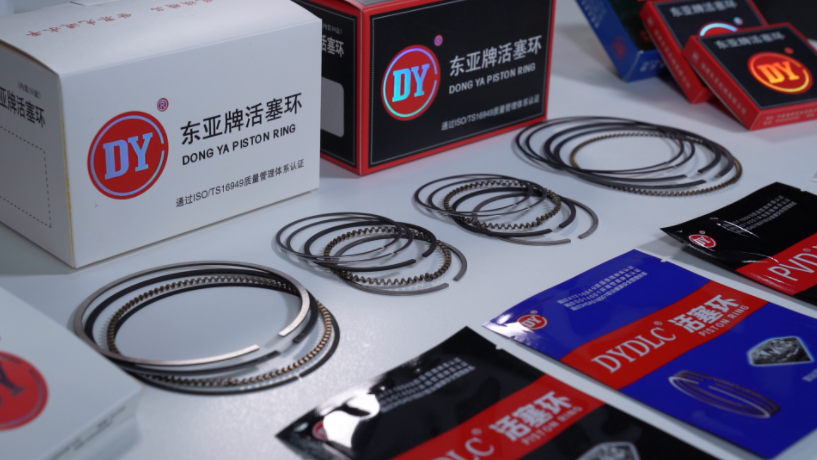Piston rings serve two primary purposes: they separate the combustion chamber from the crankcase, and they regulate the amount of lubricating oil between the cylinder liner and piston.
Piston rings play a crucial role in maintaining a seal between the combustion space and the crankcase. While the combustion space features fixed cylinder walls and a stationary upper wall, there's no fixed lower wall. To create a moving seal in this setup, piston rings are employed.
These rings are affixed to the piston within recessed grooves, and a thin layer of oil fills the space between the rings and the cylinder liner (with no direct contact between the rings and the liner). Thanks to this oil film and the precise clearances between the rings and the liner, the rings can uphold a tight seal while moving linearly up and down within the cylinder.

Piston rings are categorized into two main types:
Compression rings create the seal between the crankcase and the combustion space. Positioned closest to the combustion space, they must endure substantial pressure and temperature fluctuations.
Scraper rings control the amount of lubricating oil between the piston rings and the cylinder liner. Situated below the compression rings and farther from the combustion space, they are not subjected to the same extent of pressure and temperature variations as compression rings.
Most four stroke engines utilize three piston rings (two compressions and one scraper) whilst most two stroke engines utilize only two piston rings (one compression and one scraper).
Piston ring failure or improper lubrication can result in a phenomenon known as "blow-by," where gases escape from the combustion space into the crankcase. This occurrence is undesirable as it reduces engine efficiency by lowering the maximum peak pressure attained during the power stroke. Moreover, blow-by exposes gases in the crankcase to elevated temperatures and possibly higher pressures, increasing the risk of a crankcase explosion. Such explosions pose a significant threat, particularly for large two-stroke marine engines.
Copyright:@2020-2021
Comments Please sign in or sign up to post.
0
0 of 500 characters used